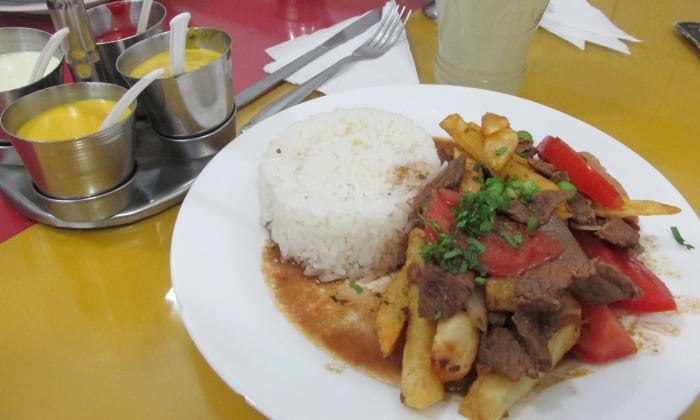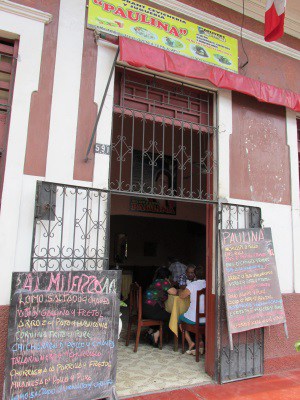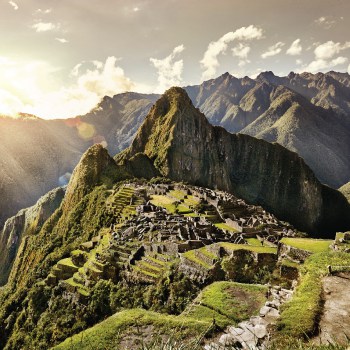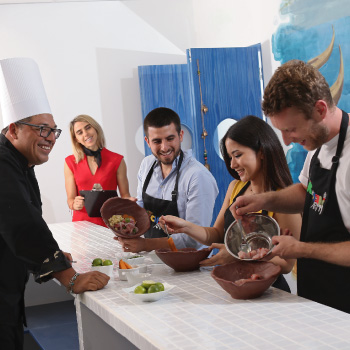How to Eat for Cheap in Peru
Food is cheap in Peru, especially if you know where and what to eat. But eating will still be one of your main expenses, and pricey tourist-oriented restaurants can wipe out your budget faster than a quick-fingered Cusco pickpocket.
You should obviously treat yourself now and again, and be sure to sample the best food that Peru has to offer, but you’ll need to avoid too much extravagant eating if you want to keep your budget in check. The good news: you can eat pretty damn well in Peru without going broke in the process.

An S/.8 lomo saltado from a set-lunch menú in Cusco.
Self-catering in Peru
Cooking your own meals is obviously one way to keep expenses low in Peru. However, there are two drawbacks to this. Firstly, you won’t always be staying in a hostel or hotel that has cooking facilities. You could eat straight out of a tin or live off snacks and cereal, but you’re backpacking in Peru, not trying to survive behind enemy lines.Secondly, cooking everyday is boring. Washing up is also boring.
On the other hand, shopping at local markets is interesting, and cooking up a feast with fellow hostel-dwellers is a great way to make new friends. And, yes, you’ll save a lot of money — as long as nefarious travelers don’t steal all your money-saving ingredients from the communal hostel fridge. Food has a tendency to go missing from hostel fridges, so keep an eye on it and consider labeling your stuff (“Please don’t take my food. I’m poor and I’ll cut your hands off.”).
Another good way to stave off hunger without spending money is to make the most of the free breakfast at your hostel or hotel (most offer something, even if it’s just bread and jam). You’ll often have to drag yourself out of bed with a hangover in order to grab breakfast before the 9 a.m. or 10 a.m. deadline, but you can always go back to sleep afterwards. You lazy cheapskate.

A Cheap Lunch in Peru

Typical menú blackboards outside a restaurant in Iquitos.
Lunch is the real cheap-eat in Peru, and you should really make the most of it. Everywhere you go, you’ll see restaurants with a board outside advertising the lunchtime set menu, imaginatively called a menú.
A Peruvian menú is basically a set meal that includes a starter (normally soup or a small salad), a main course, a drink and sometimes a small dessert. You’ll normally have a range of options for the main course, often including classic dishes such as lomo saltado, arroz con pollo, and ají de gallina.
The price? Cheap. In small family-run places away from the tourist areas you can expect to pay S/.5 to S/.6 soles (a couple of dollars or less). It’s often worth paying a little more — say S/.7 or S/.8 — as the extra sol or two can make a big difference in terms of quality and quantity. Prices in the bigger cities may be higher, particularly in upscale districts of Lima such as Miraflores, but you can normally find somewhere cheap.
When it comes to choosing a restaurant with a lunchtime menú, there’s one simple rule: if it’s busy, it’s normally good. The lunch time menú is typically served between midday and 2 or 3 p.m. — if a place is packed with locals during the lunchtime service, the food is probably good value for money. So make the most of it, as it’s a great way to keep food costs low in Peru.
Dinner Time Tips for Saving Money in Peru
Dinner (or supper, depending on where you come from etc.) is generally a more expensive meal when you’re eating out in Peru, as options are typically à la carte with no cheap and cheerful set menú on offer (that’s just a lunchtime thing, normally). But you’ll still find some good low-cost options for keeping your budget in check.
If you are a fan of Chinese food, then check out the chifas. A chifa is a Chinese restaurant, typically serving food of Cantonese origin with a Peruvian twist. The quality is generally high, and S/.10 to S/.15 is often enough for a set meal (or combo) that includes a starter (normally wonton soup or a fried wonton) and a main course of your choice. You’ll find a wide range of dishes to choose from, although trying to figure out what most of them are can be tricky. In terms of quality, quantity and cost, chifas are quite a bargain — and if you can’t finish it all, you can take the leftovers back to your hostel.
ENTERTAINMENT TIP: If looking for fun at night, or to watch sports during the day, or even a taste of home, visit the Wild Rover Hostels Chain for great food, sports and beer! Entrance to their bars is free even for non-guests
Another option is to hit the street-side grills and other purveyors of random street meats. Unhygienic? You decide. Personally, I don’t have a problem eating street food in Peru, unless it’s obviously dodgy just by looking at it. Depending on where you are in Peru, you’ll find vendors cooking up various meats — chicken, pork, cow heart anticuchos, cecina, chorizo — on their grills. Side dishes include everything from fried rice to tacacho (tasty balls of mashed plantain, common in the jungle). You can eat quite a feast at these grills, often for as little as S/.6 or S/.7. Bargain.










2 comments for “How to Eat for Cheap in Peru”